I had the idea to walk Land’s End to John o’Groats towards the end of 2015. I had already decided it was time to move on from my job at the time, and it seemed like the perfect opportunity to go on a big adventure.
This famous route is frequently cycled, and occasionally walked. It is 603 miles as the crow flies, about 850 miles by road, and at least 1,200 for an interesting off-road route. I would be walking an off-road route.
I prepared for the walk over the first half of 2016. I bought The End to End Trail – the most recent guidebook for this route, which I planned to follow. I was hiking up to 25 miles a day on the weekends, sometimes with the Metropolitan Walkers (a London-based walking group for young-ish people), and sometimes solo. At the Metropolitan Walkers I met a couple of people who had done the walk. Their advice was invaluable – although I had a guidebook, being able to chat with someone about their experiences really helps. Meeting people who had done it was a turning point; it was no longer just some crazy idea, but it now seemed achievable and I decided I was going to do it.
I discovered that as I planned to start in summer, it was better to walk from north to south (John o‘Groats to Land’s End – “JOGLE” rather than the more traditional “LEJOG”). There were a number of reasons for this. On Scottish estates the deer stalking typically occurs in late August or September, which can mean diversions round the estates. The Scottish midges are apparently most numerous in August, so it would be best not to be walking there then – though in practice I left too late and probably was in Scotland near the peak, in late July and early August. Finally, and most importantly, it would allow every other bloke I met in Scotland to quip “It’s all downhill from here!”.
I started to practice wild camping. My first wildcamp was an absolute disaster. I tried to walk up Scarfell Pike in the Lake District one day in April. My pack was way too heavy, I was walking at a crawling pace. The rain was constant and towards the top it was a world of ice and snow. My phone (one of my navigational tools) got so wet it froze and became unusable. The paper map I had was not weather-proof and risked being destroyed every time I took it out. I made it to some peak, but in hindsight figured out it probably wasn’t the peak of Scarfell Pike (it was hard to tell in thick cloud). In any case I decided to go back down and found a spot to camp by Angel Tarn at about 470m. I managed to pitch the tent in horrific winds, but had to cover the fly sheet in rocks to ensure it would stay grounded. When I unpacked I found one of my two sleeping bags and my thermal undergarments were soaking wet, so I shivered through most of the night, as the wind roared down from the peaks above, with some gusts so strong they would squish the top of the tent down until the poles were touching me. But I survived to live another day and started to invest in some decent equipment.
I quickly realised that for a long hike I would need better equipment than is found in most of the high street stores. The main problem with high street hiking equipment is the weight. Tents, sleeping bags, sleeping mats and cooking equipment are heavy items, so it’s really important to cut down on their weight and volume. The best retailer I have found in the UK is Ultralight Outdoor Gear – this online store can list items by weight, and they tend to only stock items worth considering. Another option worth mentioning is Alpkit – this British outdoor brand tends to hit the sweet spot between weight and price: not the very lightest gear available but considerably cheaper.
Once I had invested in some decent equipment I did further wildcamps, in less hostile surroundings: often along the North Downs Way which offers some of the best hiking near London.
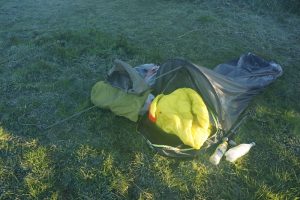
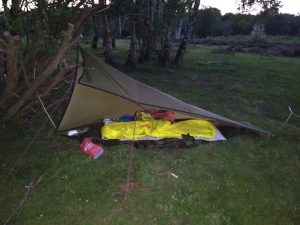
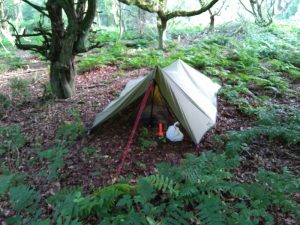
After quitting my job at the beginning of July 2016, I was almost ready to head off. But first I had the crazy idea of cycling from London to my parents’ house in Chester, whilst carrying camping equipment plus leaving gifts from my colleagues. I guesstimated that I could do this in five days. I cycled 67 miles the first day – at which point my legs stopped working and I pulled over into the forest by the road and slept. When I woke up the next morning I could barely walk. After sitting around for most of the day I managed to cycle a few miles along the Ridgeway national trail in the evening, where I slept beneath the stars by a monument to a Victorian Baron:
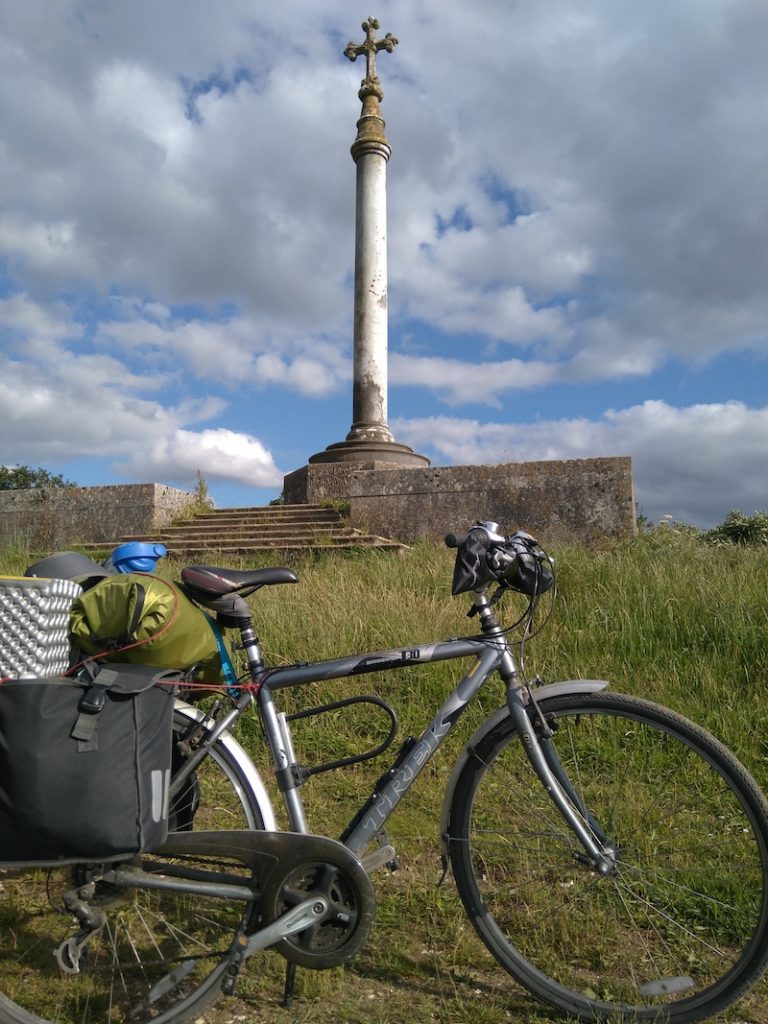
The following day I was feeling better and set off early, but as I was speeding down a hill at 7am my wheels got stuck in a groove. The groove lead off the side of the path, so I was forced to either follow it into a bush or fall to the side. I fell to the side, and luckily my bike took the brunt of the fall, and lost a brake handle. In denial, I picked myself up and continued cycling in attempt prove to myself that I was not injured. I gradually became aware of all the places my body was in pain. I had a number of grazes, and a big wound in my side. I stopped and patched myself up with a first aid kit, then in survival mode I continued to cycle 11 miles into Swindon, where a nurse at the A&E department put proper dressings on my wounds. I took the train to Chester and realised the next day how much damage my body had taken. I spent a couple of weeks recovering before I was able to do any real exercise. Once I was healthy enough to run a few miles I booked a sleeper train to Scotland.
I finally set off on the evening of Monday 18th July 2016, with an 18kg pack and a bunch of dressings for my wounds, which were still not healed. My mum saw me off at the station and insisted on taking this photo:
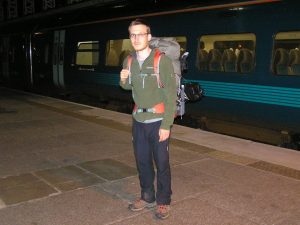
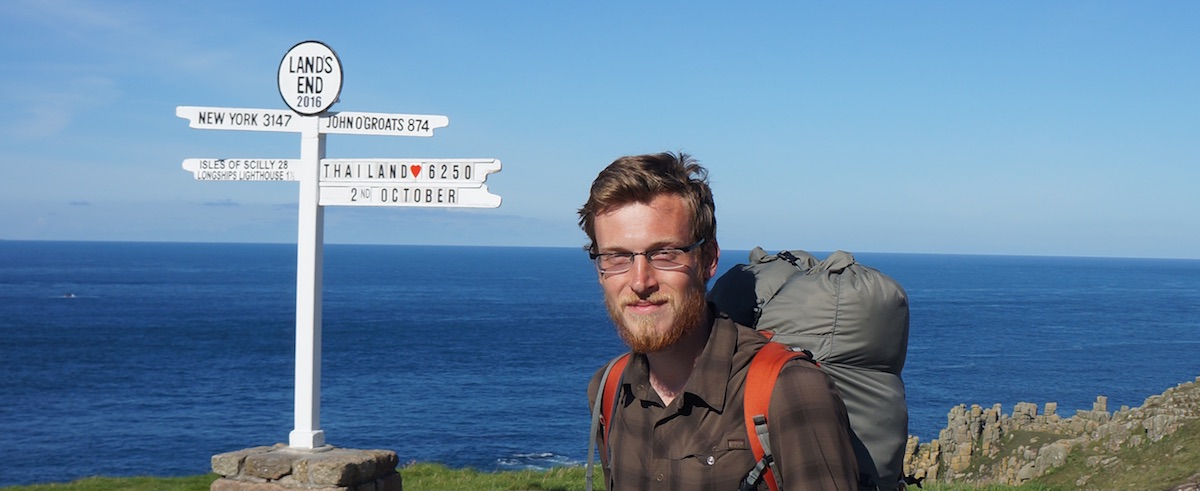
Hi Justin,
Nice to read about your walk Something I always wanted to do and never now will be able to along with cycling the whole route although I have actually cycled from one end to the other with a lot of diversions over Two summer holidays when I was 16/17 and thoroughly enjoyed it.
Hi David, I’d like to cycle it someday too. I met a few cyclists coming the other way. They almost all go from south to north due to the wind I believe (as you probably know)